By Col. Mackubin Owens, USMC (ret)
Taught at the US Naval War College for 35 years
Over the past few years, public confidence in the U.S. military, which has been extraordinarily high for decades, has fallen precipitously. In a poll of attitudes toward the military, the Ronald Reagan Presidential Foundation and Institute found that the percentage of people expressing a great deal of trust and confidence in that institution had fallen from 70% in 2018 to 45% in 2021.
There is at least anecdotal evidence to suggest that this fall from grace is related to the perception that the military, like Esau, has sold its birthright for a mess of pottage, that it has squandered its standing as a profession, becoming just another self-interested bureaucracy.
People join the military for a variety of reasons. Economic circumstances play a role, but so do patriotism and the search for adventure.
In my own experience, the people who have traditionally joined the military have been people who recognize the inherent dignity and necessity of the martial virtues: a military “ethos” that underpins unit cohesion and thereby military effectiveness.
This ethos, which has served the republic well, is the foundation of trust among soldiers, between superiors and subordinates, and at the societal level between soldiers on the one hand and citizens on the other.
This mutual trust and the acceptance of a distinct military ethos is necessary in order for the military to carry out what Samuel Huntington in his classic study of U.S. civil-military relations, The Soldier and the State, called its functional imperative, the ability to deter war or win it if it comes. This is the basis of military effectiveness.
It has long been an article of faith that to execute its functional imperative on behalf of the nation, the military of necessity must maintain an ethos distinct from that of liberal society. Indeed, a democratic republic faces a paradox when it comes to the relationship between the military and society at large: the former cannot govern itself in accordance with the democratic principles of that society.
If the military fails, the society it protects may not survive. And long experience has taught us that certain kinds of behavior are destructive to good order, discipline, and morale, without which a military organization will certainly fail.
The goal of military policy must be victory on the battlefield, a purpose that cannot be in competition with any other, including the provision of entitlements, “equal opportunity,” or diversity. Indeed, the battlefield mocks “diversity.” Unfortunately, many of those in positions of responsibility, including far too many senior members of the military itself, seem to have forgotten this imperative.
This attitude is the result of another set of social forces that Huntington called the societal imperative, “the social forces, ideologies, and institutions dominant within the society.”
He identified two components of the societal imperative: 1) the U.S. constitutional structure, the legal institutional framework that guides American politics and military affairs, and 2) the dominant ideology shaping political affairs, which Huntington identified as liberalism, “the gravest domestic threat to American military security,” due to its anti-military character.
The problem for Huntington was that, in the long run, the social imperative would prevail over the functional imperative, undermining the military virtues necessary to ensure military effectiveness.
Huntington continued that America’s anti-military liberal ideology tended to produce two outcomes. When the external threat was low, liberal ideology sought “extirpation,” the virtual elimination of military forces. When the external threat was higher, liberal ideology pursued a policy of “transmutation,” refashioning the military along liberal lines by stripping it of its “particularly military characteristics.” Today, with the military’s submission to the ideology of “diversity, equity, and inclusion,” we have transmutation on steroids.
Indeed, diversity now trumps military effectiveness as a goal of military policy.
But attempts by the military to address an alleged lack of “diversity” in the ranks can actually make things worse by pushing “identity politics,” which, by suggesting that justice is a function of attributes such as sex and skin color rather than one’s individual excellence, tends to divide people rather than unify them.
Identity politics undermines military effectiveness, which depends on cohesion born of trust among those who operate together.
DEI may be new, but the seeds of the problem were sowed years ago.
The military ‘ethos’ and its enemies
Since war has been mainly a masculine realm, the military ethos has traditionally been masculine as well. Indeed, the glue of the military ethos has been what the Greeks called philia: friendship, comradeship, or brotherly love. Philia, the bond among disparate people who have nothing in common but facing death and misery together, is the source of the unit cohesion that all research has shown to be critical to battlefield success. Philia is described by J. Glenn Gray in The Warriors: Reflections on Men in Battle.
Numberless soldiers have died, more or less willingly, not for country or honor or religious faith or for any other abstract good but because they realized that by fleeing their posts and rescuing themselves, they would expose their companions to greater danger. Such loyalty to the group is the essence of fighting morale.
The commander who can preserve and strengthen it knows that all other physical and psychological factors are little in comparison. The feeling of loyalty, it is clear, is the result, not the cause, of comradeship. Comrades are loyal to one another spontaneously and without any need for reasons.
Given its undeniably masculine foundations, it is not surprising that the earliest and most sustained attack on the traditional military ethos came from feminists and their ideological allies, who argued that the military ethos excludes women by stressing aggression, male bonding, and other “macho” attitudes.
These purported characteristics led Madeleine Morris of the Duke University School of Law, a former adviser to Bill Clinton’s secretary of the Army, to criticize the U.S. military ethos as “masculinist” and to call for the U.S. military to embrace an “ungendered vision” in which unit cohesion is achieved by compassion and idealism rather than by “macho posturing.”
Morris decried the dominant “masculinist military construct” that favored the “hypermasculine male,” writing in her article “By Force of Arms: Rape, War, and Military Culture” for the February 1996 issue of the Duke Law Journal that there was much to be gained and little to be lost by “changing this aspect of military culture from a masculinist vision of unalloyed aggressivity to an ungendered vision.”
Morris’s comments are typical of a civilian elite that sees the military ethos not as a valuable contribution to military effectiveness but as a problem to be eradicated in the name of DEI, sexual politics, and the politics of “sexual orientation.”
At a minimum, elite opinion contends that the military is obligated to adapt to contemporary liberal values, patterns of behavior, and social mores, no matter how adversely they might affect the military’s ability to carry out its functional imperative. This is the essence of Huntington’s transmutation.
The radical feminist assault on the military ethos
In the 2000 book Real Politics: At the Center of Everyday Life, the late American political philosopher Jean Bethke Elshtain identified what she described as the two poles of modern radical feminism: the “repressive androgynists,” who contend that there are no real differences between men and women, indeed that the idea that there are differences is an illusion fostered by a repressive patriarchy, and the “feminist victimization wing,” which paints the relations between the sexes as a continuous train of abuses by men who victimize women on a daily basis.
For decades, these wings of feminist ideology have worked in tandem to sustain an attack on the culture of the U.S. military, culminating in the inevitable decision by the Pentagon to open infantry and special operations to women.
In light of the argument that women are as capable of performing these elite missions as men, it is indeed ironic that the wedge issues driving the military toward this end have come from the victimization wing, stretching from the “Tailhook” episode in 1991 to the current charge of rampant sexual assault in the military.
If feminists had really been concerned about merely opening the infantry and special operations forces to women, they would have stressed the ability of women to meet the high physical and mental standards necessary to survive in the demanding environment of close-in ground combat. Instead, they focused on the alleged vulnerability of women to male, though not female, sexual predators, illustrating that military culture is their real target.
One of the ironies of the focus on sexual assault in the military is that it has served to objectify women, not as sexual objects but as weaklings who have no place in the military. It diminishes the significant contributions that women have made to the nation’s defense, serving honorably, competently, and bravely during both peace and war.
The fact is that the vast majority of women in today’s armed forces are extremely professional and want nothing to do with Elshtain’s two wings of feminism. Yet they have essentially been infantilized by the Pentagon’s focus on the alleged victimization of women in the military.
When the U.S. military insisted on opening infantry and special operations forces to women, the focus should have been on upholding high standards, no matter the outcome.
Instead, those who wanted to open these heretofore restricted military specialties to women insisted on stigmatizing males as sexual predators and women as childlike victims whose only protection is to charge sexual assault. The result has been a less effective military, rent by dissension.
The case against women in ground combat
One of the most important factors in war is what the Prussian “philosopher of war” Carl von Clausewitz called “friction … the only concept that more or less corresponds to the factors that distinguish real war from war on paper.”
“Everything in war is simple,” he wrote, “but the simplest thing is difficult. The difficulties accumulate and end by producing a kind of friction that is inconceivable unless one has experienced war. … The military machine — the army and everything related to it — is basically very simple and therefore seems easy to manage. But we should keep in mind that none of its components is of one piece: each part is composed of individuals … the least important of whom may chance to delay things or somehow make them go wrong. … This tremendous friction, which cannot, as in mechanics, be reduced to a few points, is everywhere in contact with chance, and brings about effects that cannot be measured, just because they are largely due to chance.”
Friction appears to be intrinsic to war, reflecting the disproportionately large effects of the “least important” people in the system and of minor unforeseeable incidents. Unnoticeably small causes can be amplified in war until they produce unanticipated macro-effects.
Military organizations, of course, attempt to reduce friction. According to Clausewitz, friction is countered by such means as training, discipline, regulations, orders, and “the iron will of the commander.” Anything that undermines these factors helps to generate friction.
Unfortunately, the leaders of the U.S. military, believing their own propaganda about how technological prowess had “changed the very nature of war” by eliminating “the fog of uncertainty,” chose to gamble that women in combat units, the success of which depends on unit cohesion, will not generate friction in addition to that arising from the processes of combat itself.
There are three sources of friction generated by women in ground combat:
First, there are substantial physical differences between men and women that place the latter at a distinct disadvantage.
Second, there is the fact that men treat women differently than they treat other men, which can undermine the comradeship upon which the unit cohesion necessary for success on the battlefield depends.
And finally, there is the reality that the presence of women inevitably leads to double standards that seriously erode morale and performance. In other words, men and women are not interchangeable.
What are some of the physical differences? A partial catalog includes the following: The average female soldier, sailor, airman, and Marine is about 5 inches shorter than her male counterpart and has half the upper body strength, lower aerobic capacity — at her physical peak between the ages of 20 and 30, the average woman has the aerobic capacity of a 50-year-old male — and 37% less muscle mass. She has a lighter skeleton, which may mean, for instance, that she can’t carry heavy loads as well as a male.
The physical differences between men and women have, unfortunately, all too often caused the military to, in effect, discard the very essence of philia: fairness and the absence of favoritism. This is the crux of the problem.
As former Navy Secretary Jim Webb observed, “In [the military] environment, fairness is not only crucial — it is the coin of the realm.” The military ethos is dependent on the understanding that the criteria for allocating danger and recognition, both positive and negative, are essentially objective.
Favoritism and double standards are deadly to philia and the associated phenomena — cohesion, morale, discipline — that are critical to the success of a military organization.
Not surprisingly, double standards generate resentment on the part of military men, which in turn leads to cynicism about military women in general, including those who have not benefited from a double standard and who perform their duties with distinction.
The military’s commitment to the demands of sexual politics has created two types of double standards.
The first is based on differing physical requirements. When Obama Defense Secretary Leon Panetta lifted the ban on women in combat in 2013, retired Air Force Maj. Gen. Charlie Dunlap, a former JAG and the director of the Duke University School of Law Center on Law, Ethics, and National Security, said, “Secretary Panetta’s decision to lift the ban on women serving in certain combat roles makes sense so long as there is no lowering of the physical or other standards required for the new positions.”
The trouble is that the desire for equal opportunity is, in practice, usually translated into a demand for equal results. Consequently, there has been a watering down of standards to accommodate the generally lower physical capabilities of women.
This has had two consequences.
First, standards have been reduced so much that, in many cases, service members no longer are being prepared for the strenuous challenges they will face in the fleet or field.
Second, and even more destructive of morale and trust, is the fact that when the requirement can’t be changed and the test cannot be eliminated, scores are “gender-normed” to conceal the differences between men and women. All the services have lower physical standards for women than for men.
The second type of double standard has been the tendency to allow women, but not men, to take advantage of sexual differences. For instance, morale, trust, and cohesion have suffered from the perception among military men that women can use pregnancy to avoid duty or deployments.
A reality check
When the decision was made to lift the ban on women in ground combat, the Marine Corps asked for a delay. The Marines conducted a $36 million study in 2015 that compared the performance of all-male units to that of sexually integrated units. The study indicated that the former performed better in the field than the latter.
The unprecedented study indicated that all-male ground combat squads were faster, stronger, and more lethal in most cases than units that included women, according to news reports. The women also suffered higher injury rates during physically demanding training.
Advocates of integration were quick to respond to the study. In the Christian Science Monitor, Anna Mulrine, channeling Morris, penned a hit piece on the Marines (“Why Marines, unlike Army and Navy, are so against women in combat,” Sept. 11, 2015), essentially arguing that a form of machismo
“has prevented the Marines from taking steps toward integrating women more seamlessly into the force — steps the Army took long ago, such as opening support jobs in combat units to women. … Within the halls of the Pentagon, the Marine Corps has widely been regarded as foot-dragging on the matter of women in its combat ranks.”
She also publicized the arguments of those who attacked the views of retired Marine Gen. Greg Newbold, who had contended in a previous article for the military blog War on the Rocks (“What tempers the steel of an infantry unit,” Sept. 9, 2015) that focusing exclusively on the physical side of women in the infantry provides an incomplete picture. Newbold had made the once-uncontroversial point that
“the issue we’re now debating has to include a recognition of cohesion and the cost of sexual dynamics in a bare-knuckled brawl, amidst primeval mayhem, in which we expect the collective entity to persevere because it has a greater will and fighting spirit, and not because it is bigger, faster, or more agile.”
The comments on Mulrine’s article posted on Facebook included multiple snipes from Army officers, active and retired, at their benighted Marine brethren.
Meanwhile, in an interview with NPR, former Navy Secretary Ray Mabus, a proponent of integration, questioned the integrity of the study, saying the fact that it “started out with a fairly large component of the men thinking this is not a good idea and women will not be able to do this” could quite possibly have had an impact on the results.
I cannot imagine any previous secretary of the Navy so gratuitously insulting one of the services that his own department oversees.
The need for moral courage
National security is serious business. If the military fails, the society it protects may not survive.
To avoid failure, the U.S. military has traditionally acted in accord with a military ethos designed to enhance unit cohesion and military effectiveness. This ethos has stressed traditionally masculine virtues.
The United States spends billions of dollars each year on defense. Congress debates the needs of each weapon system, often many times, but in recent years, there has been little or no debate about how the opening of ground combat to women affects the relationship between this ethos and military effectiveness.
One reason for this lack of debate is ideology. Advocates of women in combat do not want a public discussion because they do not want their ideological beliefs subjected to the criteria of objective reality. Thus the dismissive attitude toward the Marine study.
The second and more troubling reason for the lack of open debate is fear. Officers of all ranks have been cowed into silence. Indeed, in some quarters, to question the military’s gender policy is to engage in sexual harassment.
For most of American history, the military leaders stood up for the military ethos, explaining to fellow citizens why it is critical to military effectiveness. Sometimes they prevailed. Sometimes they lost. It was for this reason that the military has remained one of the most respected institutions in America. But this seems to be changing.
The commitment to “diversity” at all costs is today’s party line within the Pentagon. No one wants to be accused of racism or sexism, so too many officers hold their tongues as the rank and file are indoctrinated by DEI and the like. Those who don’t can find themselves sacked.
The military claims to be a profession. But all too often, it acts like just another self-interested bureaucracy.
Officers owe it to their profession and, more importantly, to the American people to say publicly what most say privately: that bending the military ethos to the demands of gender politics undermines the military ethos and reducing military effectiveness, leading inexorably to a disaster on some future battlefield.
If the military wants to reclaim its standing with the people, its leadership needs to display some moral courage.
Some people will respond that the issue of women in ground combat is moot, because 1) some women in fact passed the rigorous standards of the Army’s Ranger School and 2) there has been no catastrophic military failure attributable to the presence of women.
But the first was called into question when it was revealed that the women who passed had failed the first time and were, unlike men, given a “do over.”
Regarding the second, the sort of operations that the military has conducted over the past decades in Iraq and Afghanistan have not stressed the military to the extent that a major war against China or Russia would. Our holiday from great power conflict may be coming to an end.
Some will contend that in addition, the issue of women in ground combat has been superseded by DEI. But as suggested earlier, the roots of both are the same: the belief that the military can recruit people for their demographic rather than for their ability to do certain jobs, especially if it relaxes standards to attract more “diverse” candidates.
Dr. Mackubin Owens, a retired Marine and former Naval War College professor, is a senior fellow of the Foreign Policy Research Institute.

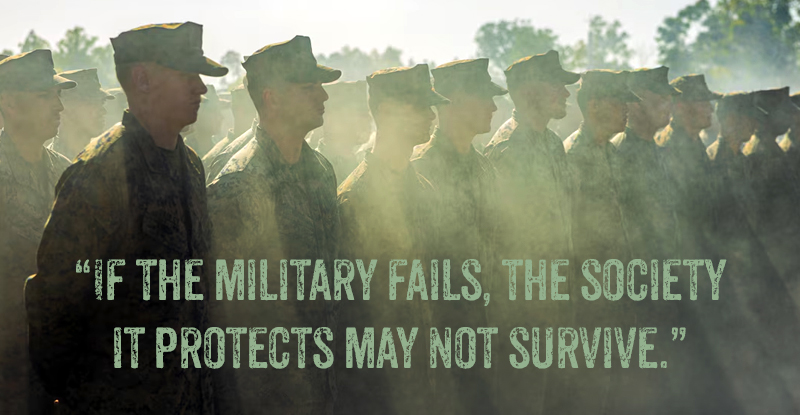


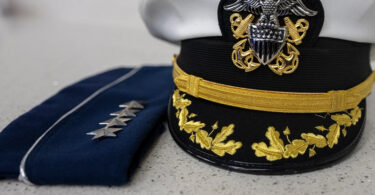
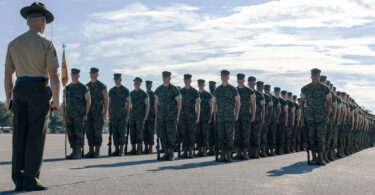
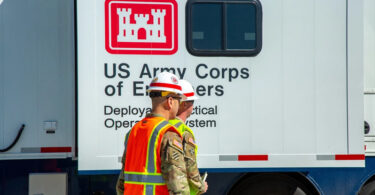
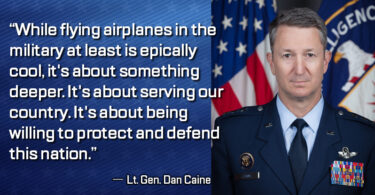
Leave a Comment